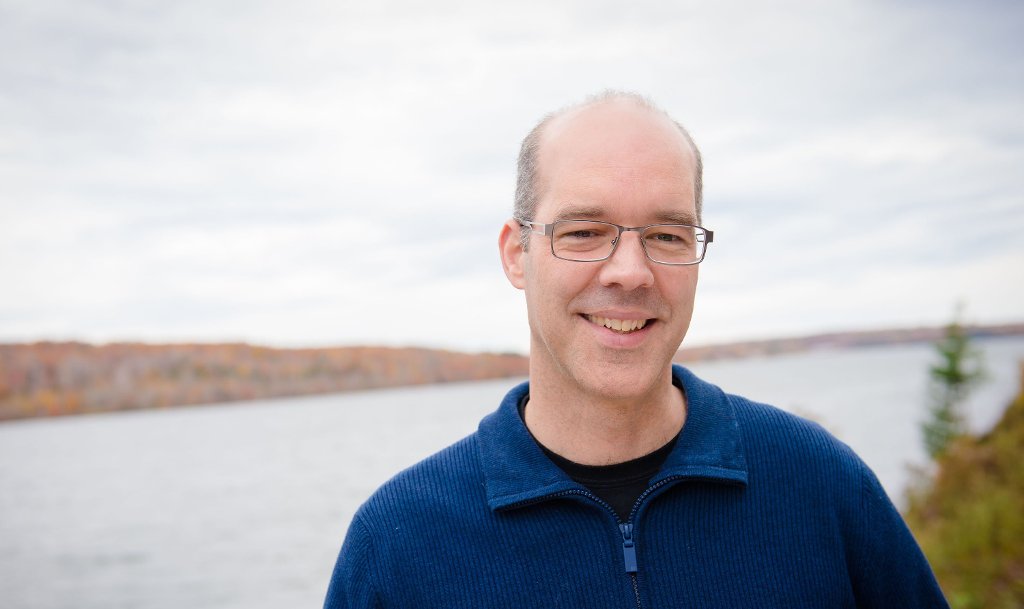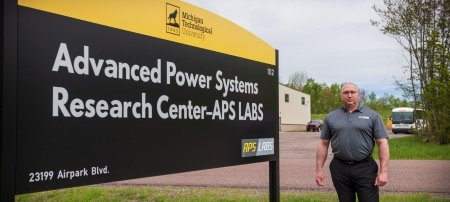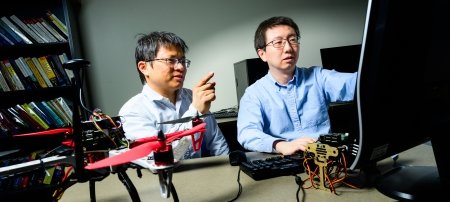The expression "he has his head in the clouds," generally means someone lacks focus and is not being realistic. For Michigan Tech researcher Raymond Shaw, winner of the University's 2016 Research Award, the expression means it's just another day at the office.
Raymond Shaw says research is like working on a puzzle: “An incredibly diverse set of intertwined and nested puzzles.” Shaw, the winner of Michigan Technological University’s 2016 Research Award says every now and then a burst of insight comes along, allowing the puzzle to be solved.
“It might seem strange to express it this way, but when that inspiration comes I feel a great sense of humility and gratitude,” Shaw says.
But unlike puzzles with a set number of pieces neatly packed in a box, the puzzles Shaw works on are a bit harder to put together. His puzzle pieces are clouds.
“We want to understand clouds, for example, what makes one cloud rain and another not” Shaw says. “Sometimes that means going into the cloud itself.”
Just as there are many ways to go about solving a puzzle, there are several ways to go inside clouds, including using holography and an airplane lab as Shaw did in cumulus clouds in Wyoming and Colorado.
"We want to understand clouds ... sometimes that means going into the cloud itself."Raymond Shaw
Physics Up in a Cloud
Shaw has gotten into clouds “from the top” in Germany, by dropping a pendulum-type device from a helicopter. While Shaw uses air travel to go to clouds, sometimes the clouds return the favor.
“We’ve gone to the mountains where you let the cloud come to you,” he says, adding that when studying clouds on a mountain top, the most valuable tool is patience. “It can be very frustrating seeing a cloud hover fifty feet above you, but when it descends and you’re inside the cloud it is definitely worth the wait.”
Shaw’s dedication to cloud research is so strong that when he can’t get to the clouds and can’t get the clouds to come to him, he has a third option. Michigan Tech has a cloud chamber, where Shaw and his team can study made-to-order clouds. Unlike other chambers that exist in laboratories around the world, the one at Michigan Tech creates clouds that are turbulent and that can persist for hours or even days, rather than the more typical time of a half hour or less.
“In nature you take what the cloud gives you," Shaw says. "With the cloud chamber you create the cloud you need.”
For Shaw, a professor of Physics and Director of Tech’s Atmospheric Sciences PhD program, his science is much more than his profession: “Research is really inspiring, nature is so profoundly beautiful and subtle, it is a privilege to be able to spend so much of my time trying to understand bits and pieces of it.”
While Shaw finds research personally rewarding, he says there is ultimately a higher purpose. “Of course, the ultimate hope is that what my students, colleagues and I learn will somehow contribute to humanity, to our collective understanding and to our well being.”
Interdisciplinary Research
In a letter nominating Shaw for the Research Award, Ravindra Pandey, Chair of the Department of Physics wrote, “Shaw is internationally recognized in the field of ‘Atmospheric Physics.’ The focus of his scientific work has been to investigate the role of turbulence on cloud formation and to study the physics of nucleation of ice crystals.” The work is highly interdisciplinary and Shaw is quick to point out his research success is not the result of flying solo.
As part of Shaw’s research, he collaborates with the National Center for Atmospheric Research to lead a team of scientists to conduct holographic imaging of cloud droplets from an airplane laboratory. He also collaborates with international scientists and has had extended stays at the Institute for Tropospheric Research in Leipzig, Germany and at Peking University in Beijing, China.
Shaw’s research essentially involves the physics of the earth’s atmosphere with an emphasis on clouds and experimental tools for studying clouds. According to Pandey, Shaw has “been involved in developing instruments for laboratory and field cloud/turbulence measurements, digital holography and phase-Doppler interferometry.”
Shaw and his group have received research grants totaling around five million dollars and published more than 80 research papers in peer-reviewed journals including Science, Physical Review Letters and Geophysical Research Letters. While his work is global, his inspiration and mentors are close to home.
“Alex Kostinski has been my research mentor since the day I arrived at Michigan Tech,” he says. “I consider myself one of his disciples.”
He also cites the leadership of Pandey. “He has an uncanny ability as Physics Department Chair to allow us all to strive for excellence without artificial incentives and to create a work environment as free as possible from bureaucratic distractions.”
In addition, Shaw feels he has benefited both professionally and personally from the interactions with graduate and undergraduate students.
“They have helped me become a better scientist and teacher and a better person," he says. "Perhaps it sounds quaint, but I do feel being recognized with the Michigan Tech Research Award is a larger recognition of the colleagues and students with whom I’ve worked.”
Shaw feels research and teaching go hand in hand, saying another thing he loves about research is how it becomes a powerful teaching method. He says students learn at a deeper level when they dig into a research problem.
"The advisor-grad student relationship is akin to an apprenticeship, where a grad student masters a craft by working side by side with a mentor. But it’s even better because as I work on research problems, I can learn a lot from students' questions and ideas."Raymond Shaw
Shaw adds that while he is appreciative of the award, the research itself and the collaborations with researchers not only at Michigan Tech, but, throughout the world, is the ultimate reward.
“The unifying aspect of my research is the atmosphere. I work on a lot of problems that are very general," Shaw says, explaining that when he thinks about those problems he usually considers how they relate to the atmosphere and clouds. "Maybe the work that many of us at Michigan Tech are doing in the atmospheric sciences will help us better understand weather and climate; those are big and daunting problems to work on, but because they are big, even incremental progress can lead to real societal benefits.”
Michigan Technological University is an R1 public research university founded in 1885 in Houghton, and is home to nearly 7,500 students from more than 60 countries around the world. Consistently ranked among the best universities in the country for return on investment, Michigan's flagship technological university offers more than 185 undergraduate and graduate degree programs in science and technology, engineering, computing, forestry, business, health professions, humanities, mathematics, social sciences, and the arts. The rural campus is situated just miles from Lake Superior in Michigan's Upper Peninsula, offering year-round opportunities for outdoor adventure.






Comments